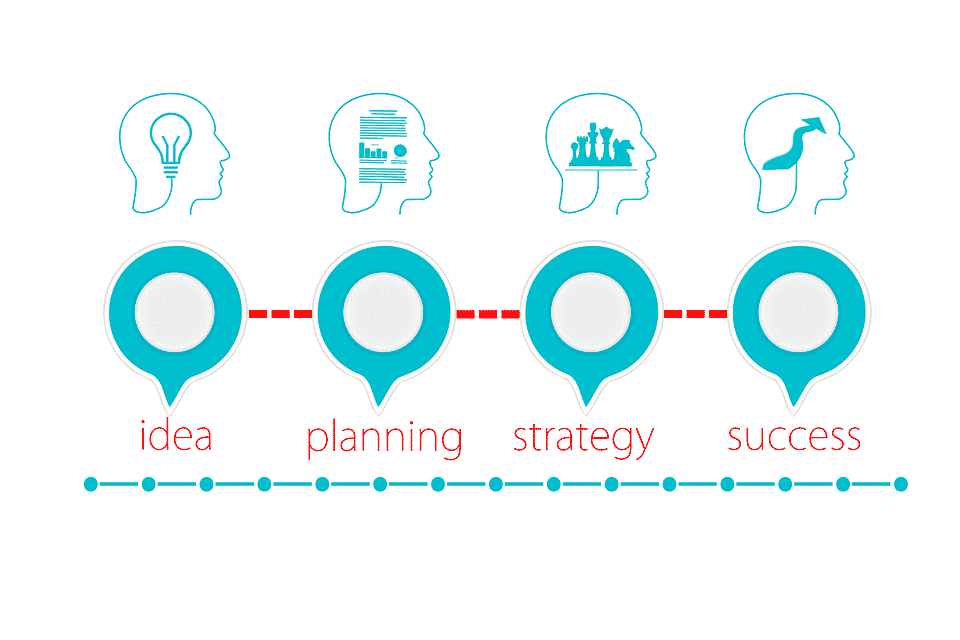Storytelling is the art of chaining words together to produce meaning and influence people. In order to tell a good story, you need inspiration, skill, and lots of practice.
Storytelling is an integral component of modern marketing. It allows you to set yourself apart from competitors, and create a loyal following for your brand. If you neglect storytelling in your marketing efforts, you will fail to make an impression on consumers who are sick and tired of reading sales-focused content.
In order to make use of storytelling for marketing, it is best to start with the basics. You need to understand what storytelling is, how it works, what are its core benefits, and how you should go about writing your first marketing story-line.
And to help you get started, we have written a short primer on the aforementioned topics which you can find in the remainder of this post.
What is Storytelling
At its core, storytelling is the activity of weaving facts and fiction into a coherent whole for the purpose of influencing some group of people. Storytelling is as old as history, spanning all known societies and cultures. Stories are a form of universal currency, in the sense that everyone understands how they work on an intuitive level.
The power of storytelling can be harnessed for different goals. Some people read stories in order to learn something, others do it for pleasure and entertainment, others yet read out of a sense of obligation towards particular cultural norms.
Everyone that has sufficient master over a language can become a storyteller, but some individuals are more inclined than others to present information in the form of a narrative. In a business context, these are usually marketers, salesmen, PR reps, and content writers.
Benefits of Storytelling
There are several reasons why a business would want to use storytelling over other marketing methods, or in addition to them.
Stories can help illustrate abstract notions and they can make complex messages more intelligible to readers. We’ve all been in a situation where we’re trying to figure out some new concept or idea, only to have its meaning elude us. Stories can help us surmount this difficulty by making the idea more distinct, relatable, or evocative.

Stories can also help us understand and relate to each other more effectively. All stories share one common element, namely that they were created by humans like ourselves. This common frame of reference ensures that whenever a storyteller talks about fear, pain, love, hope, and other elements of the human condition, we can all understand what they’re talking about.
From a marketing perspective, a story is a powerful tool for humanizing an entity such as a company or a brand. By associating your brand with a particular narrative, you will make it more relatable to consumers.
The Inner Workings of a Story
It is difficult to specify a formal criterion for what makes a story good or bad. Well-known stories from the literary canon have their detractors, and even the most poorly written story will have a fan or two somewhere. With that being said, there are some characteristics that are commonly found in stories that are well regarded by most people. A good story is one that:
- engages the readers, and makes them want to find out what comes next
- educates the readers, increasing their knowledge and making them interested in a topic
- makes the reader relate with the characters through shared experiences
- is easy to follow along in virtue of having a solid structure
- is memorable thanks to interesting characters, unexpected plot twists, and evocative descriptions
A story doesn’t have to accomplish all of the above in order to be good, but some of the best stories we know have reached their status as works of art through a combination of these characteristics.
How to Write a Good Story
Now that we have covered the basics of storytelling, we want to offer some advice on how you can use it to enhance the effectiveness of your marketing campaigns.
1. Determine Your Audience
The first step to writing an effective marketing story is knowing who you’re targeting. If you start writing a story without thinking first about your audience, you will risk creating something that appeals to no one, wasting valuable time and resources.
The best way to determine your target audience is to look at your existing customers and clients. Use a CRM software suite to aggregate customer data, and then start looking for patterns. Different forms of writing will appeal to different demographics. If your customers are mainly C-suite executives, going for a whimsical tone won’t do you much good. Conversely, if your audience is mainly comprised of millennials and Gen Z kids, using corporate-speak to present your narrative is not a good idea.
2. Flesh Out Your Message

Your story should have a main message, irrespective of its length and purpose. This core idea will serve as the foundation for the rest of your writing. The reasoning for this is simple – it is very unlikely that people will read your story twice, so whichever idea sticks out to them on first reading will likely be their only takeaway from your text. Therefore, you want to ensure that your core message is the one that they will remember. In order to clarify your message, ask yourself the following questions:
- Is your story about a particular product or service you’re offering?
- Are you writing about a problem, a solution to a problem, or both?
- Are you presenting various opinions on an issue or just your own?
3. Decide on a Format
Stories come in many forms, and it’s up to you to decide which one would fit your target audience the best. Also keep in mind that your writers are usually specialized in some forms of writing, and lacking in others, so work together to find an appropriate solution. Some of the most commonly used forms of writing in marketing include:
- Guides and Tutorials. These kinds of stories usually describe how to carry out a particular action. Skimp on unnecessary details, and focus on using clear, straightforward language.
- Brand Awareness Articles. These stories are meant to introduce the public to your brand, its values, and the people behind them. The most important thing here is to sound authentic.
- Opinion Pieces and Editorials. Stories of this type give you the opportunity to be more subjective and use a less formal tone of voice. They are excellent for generating user feedback.
4. Write and Share the Story
Once you have all the pieces in place, it is time to write the story itself. If you have a penchant for writing, you can do everything yourself, or you can hire a professional writer for the task. In the latter case, make sure to explain all the details upfront, to avoid confusion and unnecessary edits later.
Once the story is finished, you need to find a suitable venue to publish it. Your website is the first logical choice, followed by your company blog. Social networks are another distribution channel you can use but bear in mind that engagement has been low in recent years. Finally, if you have an email newsletter, publishing the story in increments over time can help you maintain customer engagement for longer.
Conclusion
Mankind has been telling stories since the dawn of history, and the practice has lost little of its appeal over the centuries. Today, storytelling is extensively used by businesses of all sizes to engage customers, raise brand awareness, and contribute to the ongoing narrative of our time. If you wish to make your marketing more authoritative, informative, and just plain enjoyable to read, start working on your storytelling skills today.
Author Bio

started off my career in digital marketing working for a few local marketing companies. After a year or two learning different aspects of marketing, I moved on and worked for DesignRush for about ten months. Right now, I’m working for ReallySimpleSystems as an assistant editor and marketing consultant. Other than that, I enjoy good coffee, homegrown tobacco, and Otis Redding.







































